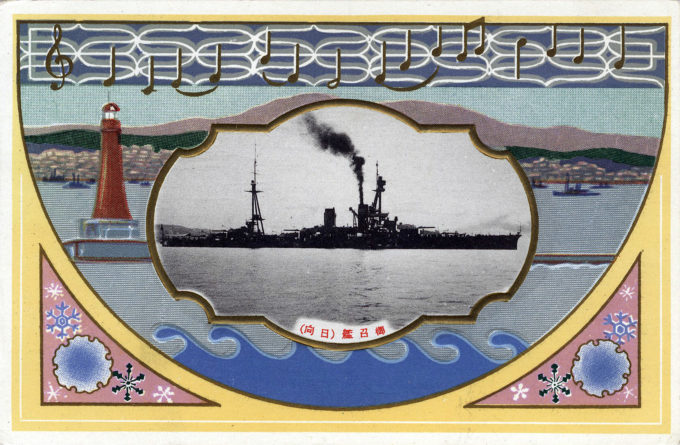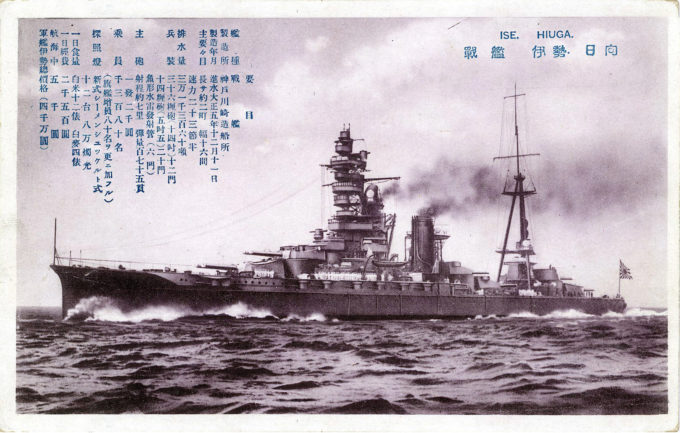
Imperial Japanese Navy battleship Hyuga, c. 1920. Laid down in 1915 at the Mitsubishi dockyard at Nagasaki, Hyuga was completed and commissioned in 1918. Considered obsolete at the start of the Pacific War, despite extensive reconstruction in the 1930s, Hyuga and its sister ship, Ise, never saw combat as battleships and were converted from 1942-43 into hybrid aircraft carriers.
See also:
Imperial Japanese Navy “Fuso”-class battleship, c. 1935.
Imperial Japanese Navy Battleship “Nagato”, c. 1925.
Final Imperial Japanese Navy Fleet Review, 1940.
“Hyūga was the second and last Ise-class battleship built for the Imperial Japanese Navy (IJN) during the 1910s. Although completed in 1918 at the Mitsubishi shipyard at Nagasaki, she played no role in World War I. Hyūga supported Japanese forces in the early 1920s during the Siberian intervention in the Russian Civil War. In 1923, she assisted survivors of the Great Kantō earthquake. The ship was partially modernised in two stages in 1927–1928 and 1931–1932, during which her forward superstructure was rebuilt in the pagoda mast style. Hyūga was reconstructed in 1934–1936, improvements being made to her armour and propulsion machinery. Afterwards, she played a minor role in the Second Sino-Japanese War.
“Despite the expensive reconstruction, the ship was considered obsolete by the eve of the Pacific War, and did not see significant action in the early years of the war. After the loss of most of the IJN’s large aircraft carriers during the Battle of Midway in mid-1942, she was rebuilt with a flight deck replacing the rear pair of gun turrets to give her the ability to operate an air group of float planes; lack of aircraft and qualified pilots meant that Hyūga never operated her aircraft in combat. She participated in the Battle off Cape Engaño in late 1944, where she helped to decoy the American carrier fleet supporting the invasion of Leyte away from the landing beaches.
“Afterwards, the ship was transferred to Southeast Asia, occasionally serving as a flagship. In early 1945, Hyūga participated in Operation Kita, during which she transported petrol and other strategic materials back to Japan. The ship was then reduced to reserve until she was sunk while anchored, without fuel or aircraft and reduced to the role of floating anti-aircraft gun platform, during American airstrikes on Kure naval base in July 1945.
“After the war, Hyūga was raised between 2 Jul 1946 and 4 Jul 1947 and then broken up for scrap at the Kure drydock.”
– Wikipedia

Ise-class battleship, c. 1925. Ise and and its sister-ship, Hyūga, were two fast dreadnoughts built by capitalizing from the experience gained with the two previous Fuso-class battleships, the first to be designed and built entirely in Japan. Ise and Hyuga were launched at the end of the First World War, too late to have any involvement in that conflict. In the Pacific War, after the Battle of Midway (1942) and with both vessels deemed second-tier as originally congfigured, both Ise and Hyūga emerged from reconstruction with a flight deck at the rear (their two extreme turrets are removed and recycled for coastal defense), with a central hangar served with elevator, catapults, and a complement of 14 Yokosuka D4Y catapulted torpedo bombers and 8 observation Aichi E16A, and floatplanes.

